Geometric Solids - Definition, Examples, Quiz, FAQ, Trivia
Learn about 3D shapes with easy explanations, examples, and interactive activities
What are Geometric Solids?
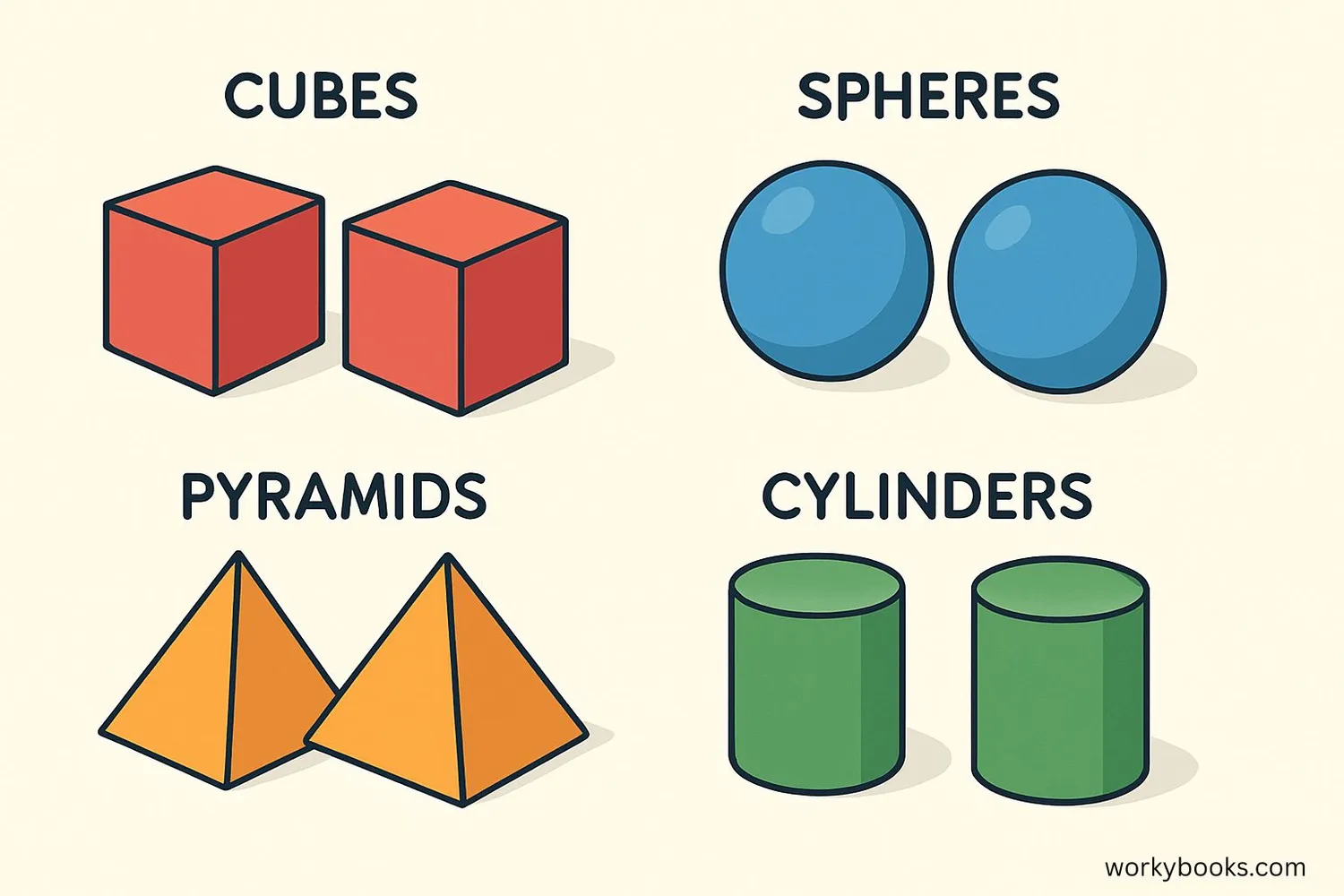
Geometric solids, also called 3D shapes, are objects that have three dimensions: length, width, and height. Unlike flat shapes that only have two dimensions, 3D shapes take up space and have volume.
Think about the difference between drawing a square on paper (2D) and holding a cube in your hand (3D). The cube has depth and takes up space, while the square is flat.
Geometric solids are all around us! Your books, balls, ice cream cones, and even buildings are examples of 3D shapes. Learning about these shapes helps us understand our world better.
Key Concept
Geometric solids are 3D shapes that have length, width, and height. They occupy space and have volume.
Types of 3D Shapes
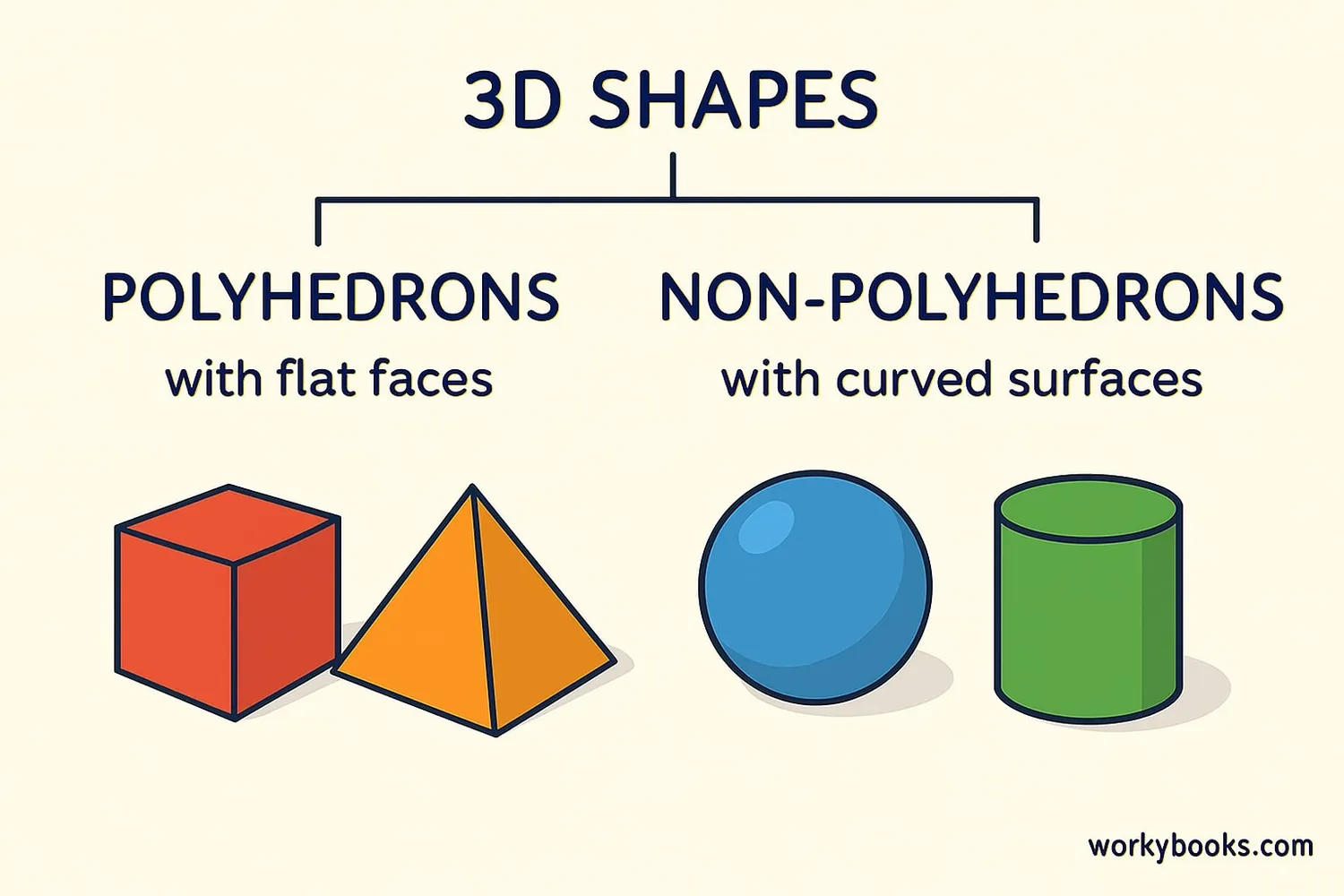
There are many types of geometric solids, but they can be divided into two main groups:
Polyhedrons: These are 3D shapes with flat faces, straight edges, and sharp corners (vertices). Examples include cubes, pyramids, and prisms.
Non-Polyhedrons: These shapes have curved surfaces or a combination of curved and flat surfaces. Examples include spheres, cones, and cylinders.
Cube
6 square faces, 12 edges, 8 vertices
Sphere
Perfectly round, no edges or vertices
Cylinder
2 circular bases, 1 curved surface
Cone
1 circular base, 1 curved surface, 1 vertex
Remember
Faces are the flat surfaces, edges are where two faces meet, and vertices are the corner points of a shape.
Polyhedrons
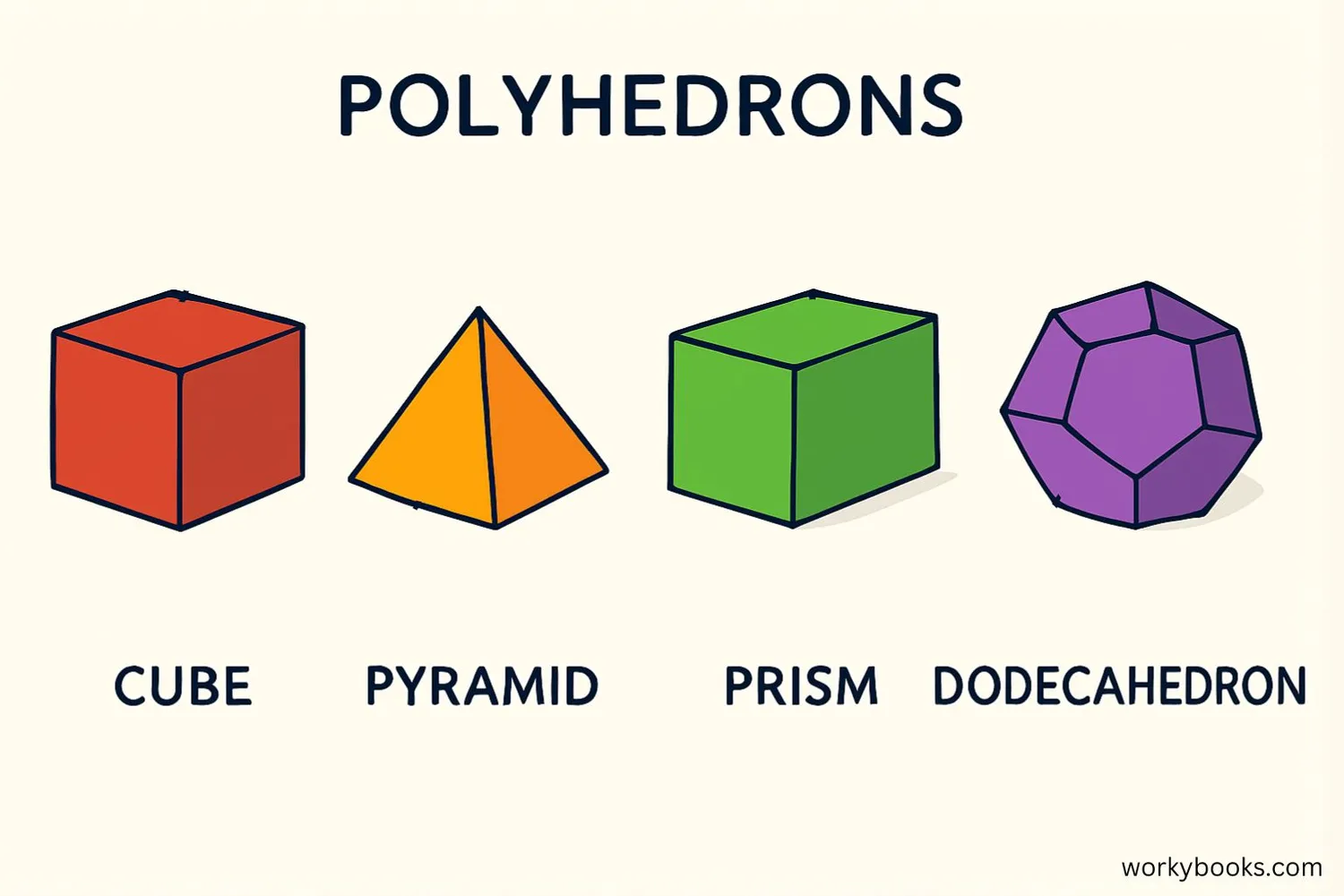
Polyhedrons are 3D shapes with flat faces, straight edges, and sharp corners called vertices. The word "polyhedron" comes from Greek words meaning "many faces."
There are different types of polyhedrons:
Prisms: These have two identical ends and flat sides. Examples include rectangular prisms (like boxes) and triangular prisms.
Pyramids: These have a polygon base and triangular sides that meet at a point called the apex. The Egyptian pyramids are famous examples!
Platonic Solids: These are special polyhedrons where all faces are identical regular polygons. There are only 5 Platonic solids: tetrahedron, cube, octahedron, dodecahedron, and icosahedron.
Math Fact
Euler's Formula describes the relationship between faces (F), vertices (V), and edges (E) of polyhedrons: F + V - E = 2.
Spheres
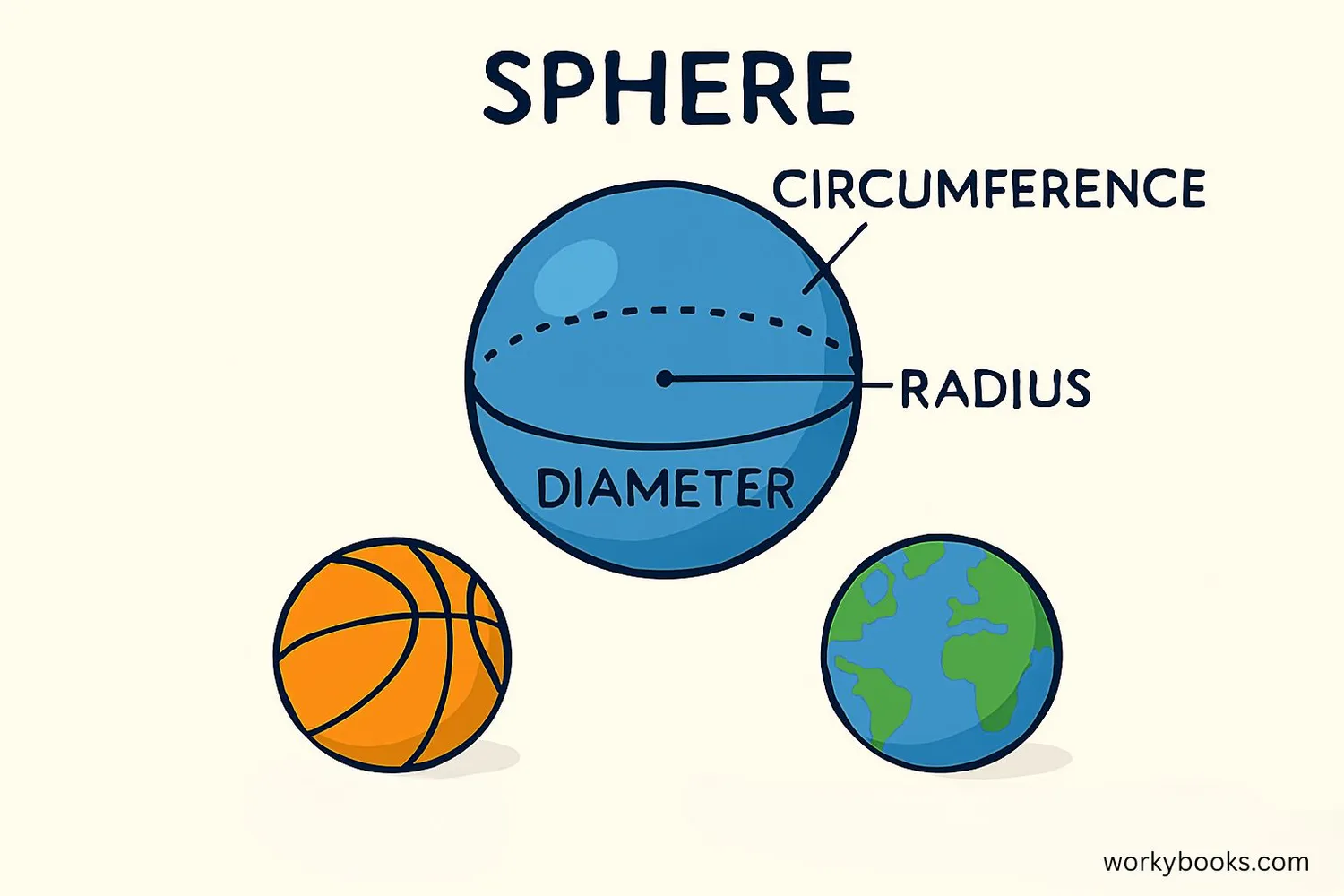
A sphere is a perfectly round 3D shape where every point on the surface is the same distance from the center. Unlike polyhedrons, spheres have no faces, edges, or vertices.
Important parts of a sphere:
Radius: The distance from the center to any point on the surface.
Diameter: The distance across the sphere through the center (twice the radius).
Circumference: The distance around the sphere at its widest point.
Spheres are all around us! Balls, oranges, bubbles, and even our planet Earth are shaped like spheres (though Earth is slightly flattened at the poles).
Real World
Many things in nature form spheres because this shape uses the least surface area to contain a given volume, making it energy efficient.
Cubes
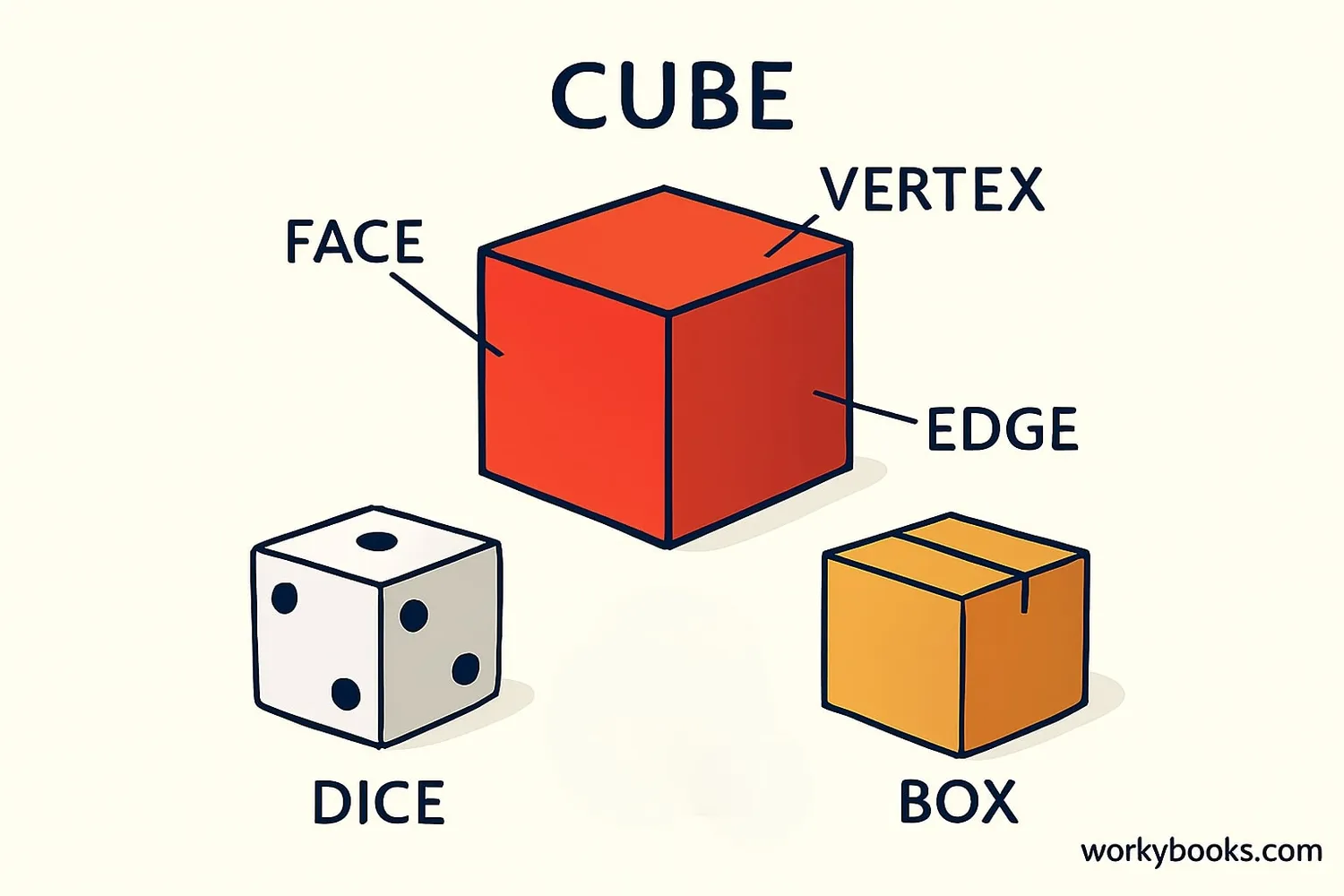
A cube is a special type of rectangular prism where all six faces are identical squares. It has 12 edges of equal length and 8 vertices (corners).
Properties of a cube:
- 6 square faces
- 12 edges of equal length
- 8 vertices
- All angles are right angles (90 degrees)
Cubes are common in our daily lives. Dice, sugar cubes, and some boxes are cube-shaped. In geometry, cubes are important because they help us understand volume - the amount of space a 3D shape occupies.
Volume of a Cube
Where s is the length of one side of the cube.
Did You Know
The Rubik's Cube is one of the world's most popular puzzles, with over 350 million sold since its invention in 1974.
Geometric Solids Quiz
Test your knowledge about 3D shapes with this 5-question quiz. Choose the correct answer for each question.
Frequently Asked Questions
Here are answers to common questions about geometric solids:
Geometry Trivia
Discover interesting facts about geometric solids:
Ancient Geometry
The ancient Egyptians were among the first to use geometric principles in building the pyramids over 4,500 years ago. They understood practical geometry long before it was formally studied.
Only Five Platonic Solids
There are only five regular polyhedrons (Platonic solids): tetrahedron, cube, octahedron, dodecahedron, and icosahedron. These were described by the ancient Greek mathematician Plato.
Shapes in Nature
Honeybees build their hives with hexagonal cells because this shape uses the least amount of wax to hold the most honey. It's one of nature's most efficient designs!
Planetary Shapes
Large objects in space like planets and stars form spheres because gravity pulls matter equally toward the center. Smaller objects like asteroids can have irregular shapes.


